Eddy Grant
Eddy Grant stands among an elite group of artists as one who has not just merely moved successfully across the musical spectrum, but has actually been at the forefront of genres and even created one of his own. From pop star to reggae radical, musical entrepreneur to the inventor of ringbang, the artist has cut a swath through the world of music and made it his own.
Born in Plaisance, Guyana, on March 5, 1948, the young Edmond Grant grew up on the sound of his homeland, tan singing, an Indo-Caribbean vocal style whose roots lay in South Asia and are the backbone of modern chutney. Then in 1960, the Grant family emigrated to England, taking up residence in the working-class Stoke Newington area of London. The young teen’s musical horizons swiftly expanded, embracing the R&B, blues, and rock that percolated across his new island home.
In 1965, Grant formed his first band, the Equals, and long before the days of 2-Tone, the group was unique in being the first of Britain’s multi-racial bands to receive any recognition. The West Indian contingent comprised Jamaican-born singer Lincoln Gordon, with his twin brother Derv and Grant both on guitar, while the rhythm section of bassist Patrick Lloyd and drummer John Hall were native-born white Englishmen. Like most of the teenaged bands roaming the capital at the time, the Equals cut their teeth on the club and pub circuit and finally inked a label deal with President Records in early 1967. Their debut single, “I Won’t Be There,” didn’t crack the charts but did receive major radio support. This, alongside an expanding fan base wowed by their live shows, pushed their first album, Unequaled Equals, into the U.K. Top Ten. At the request of his label, Grant had also been working with the Pyramids, the British group who had backed Prince Buster on his recent U.K. tour. Besides composing songs for the band (and one for Buster himself, the rude classic “Rough Rider”), Grant also produced several tracks, including the band’s debut single and sole hit, “Train to Rainbow City.” In 1968, the Equals scored their own hit with “I Get So Excited,” the group’s debut into the Top 50. Although their follow-up album, Equals Explosion, proved less successful than its predecessor, as did the next single, the quintet’s career was indeed about to explode. “Hold Me Closer” may have disappointed in the U.K., where it stalled at a lowly number 50, but in Germany, the single was flipped over and “Baby Come Back” released as the A-side. It swiftly soared to the top of the German charts, a feat repeated across Europe. Later that spring, a reissued British single finally received its just due and reached number one. Even the U.S. took notice, sending the single into the lower reaches of the Top 40. Sadly, this turned out to be a flash in the pan. The Equals’ follow-up single, “Laurel and Hardy” died at number 35; its successor did even worse, while their new album, Sensational Equals, didn’t even make the charts. New hope arrived when “Viva Bobby Joe” shot into the Top Ten in the summer of 1969, but its follow-up, “Rub a Dub Dub,” just scraped into the Top 35. Understandable, considering the Equals’ roller coaster of ups and downs, Grant now turned his attention elsewhere.
Message Man In 1970, he started up his own specialty record label, Torpedo, concentrating on British reggae artists. He also utilized the label as a home for a brief solo career under the alias Little Grant, releasing the single “Let’s Do It Together.” But the artist hadn’t given up on the Equals yet, and good thing too. Later that year, their new 45, “Black Skinned Blue Eyed Boys,” slammed the group back into the Top Ten. And then, the unimaginable happened. On New Year’s day in 1971, Grant, all of 23 years old, suffered a heart attack and a collapsed lung. If lifestyle played a part, it wasn’t because he drank, took drugs, smoked, or ate meat; it was due to Grant’s only vice — a hectic schedule. He quit the group at this point and the Equals soldiered on into the shadows without him. He sold Torpedo as well and with the proceeds opened up his own recording studio, The Coach House, in 1972. Grant continued to produce other artists and release their records through his newly launched Ice label, but his own musical talents were seemingly left behind. It wasn’t until 1977 when Grant finally released a record of his own, the Message Man album. It was three years in the making and a stunning about-face from his previous pop persona, even if “Black Skinned Blue Eyed Boys” had suggested a change was imminent. Tracks like “Cockney Black,” “Race Hate,” and “Curfew” were politicized dark masterpieces laced with aggression and anger. But the album also included some lighter moments, including “Hello Africa,” which featured a sound that the media hadn’t even invented a word for yet. Grant dubbed it “kaisoul,” an amalgamation of kaiso (the traditional word for calypso) and soul. Caribbean legend Lord Shorty, the acknowledged inventor of this new crossover hybrid, labeled it solka. Neither term stuck, however, once the Trinidad and Tobago press came up with their own label: soca. But regardless of what it was called, the style was just one of many hybrids that Grant was entertaining. Message Man may have proved a commercial failure, but that didn’t dim the artist’s vision for one second. Walking on Sunshine Two more years passed while Grant wrestled with its follow-up in the studio, composing, producing, and performing virtually the entire album himself. The end result was 1979’s Walking on Sunshine, one of the greatest albums of the decade. While the B-side featured a clutch of seminal musical hybrids, the centerpiece of the album’s A-side was “Living on the Frontline,” a dancefloor classic that blended tough lyrics with an electronic sheen, a sense of optimism, and a funk-fired sound. Released as a single, the song roared up the British chart, while becoming a cult hit in U.K. clubs. Inexplicably, the album itself didn’t chart at all, nor did its follow-up, 1980’s Love in Exile. However, in the next year, Grant finally cracked the market wide open with Can’t Get Enough, which finally breached the Top 40. His singles’ success had continued uninterrupted across “Do You Feel My Love,” “Can’t Get Enough of You,” and “I Love You, Yes I Love You.” A phenomenal live album, Live at Notting Hill, was recorded in August 1981 during London’s Notting Hill Carnival. The following year’s Killer on the Rampage slew its way into both the British and American charts, where it landed at number ten. The album spun off “I Don’t Wanna Dance,” which topped the chart in the U.K., while the exhilarating “Electric Avenue,” from his next album, Going for Broke, landed at number two on both sides of the Atlantic.
Born Tuff Nothing else would equal these dizzying heights. Three more singles followed by the end of 1984, but none managed to break into the Top 40. In the U.S., only one, “Romancing the Stone,” actually made the chart, charming its way into a respectable berth just outside the Top 25. That was his final showing in the U.S. On both sides of the Atlantic, 1987’s Born Tuff and the following year’s File Under Rock were passed over by the record-buying public. However, the British gave the artist one last Top Ten hit in 1988 with “Gimme Hope Jo’anna,” a highlight of his 1990 Barefoot Soldier album. Unfortunately, its 1992 follow-up, Painting of the Soul, went the way of its last few predecessors. By then, the artist had long ago left the U.K., having emigrated to Barbados a decade earlier. Even as his own career had taken off back in England, Grant was spending much of his time mentoring a new generation of soca talent. He opened a new studio, Blue Wave, and lavished most of his attention on it, which explains the gap in his output between 1984 and 1987. By the time “Jo’anna” had fallen off the chart, Grant was well on the way to creating his own mini-empire. Besides giving new stars-to-be a helping hand, Grant also moved into music publishing, specializing in calypso’s legends. Over the years, Ice has thrilled the world by making the back catalog of multitudes of stars available: Lord Kitchener, Roaring Lion, and Mighty Sparrow, to name a few. And almost uniquely among Caribbean artists, Grant has maintained control over his own music, and Ice, of course, has kept it available. Across Grant’s solo career, the artist has continued to experiment with different styles in ever-changing combinations. Pop, funk, new wave, reggae, Caribbean, African, and even country have all been melded into his sound. 1992’s Painting of the Soul was heavy with island influences, while the next year’s Soca Baptism is a collection of covers, from hits to obscurities, all dosed with a modern sound.
By this time, Grant was hard at work in the evolution of yet another hybrid style: ringbang. Many of the genre’s elements are easily found in the artist’s earlier recordings, from African rhythms to military tattoos, alongside soca itself and dancehall rhythms, many of the latter influenced by Grant’s own previous work. The new style debuted in 1994 at the Barbados Crop Over festival. Since then, the style has continued to intrigue, but has yet to create the international success that it’s always threatened. Much of this can be laid at Grant’s own door, through a simmering dispute with other artists and the legal ramifications of the genre’s trademark. A vociferous supporter of artists’ rights, Grant first ran into trouble in 1996 when he demanded his label’s artists receive adequate copyright fees from Trinidad and Tobabgo’s Carnival. A heroic stance that infuriated the festival’s organizers, this was quickly overshadowed by the public outcry over soca itself. As far as T&T was concerned, the inventor of soca was island native Lord Shorty, who announced its birth in 1978 with the Soca Explosion album. However, Grant insists otherwise, crediting his own “Black Skinned Blue Eyed Boys” as the first-ever soca record. Needless to say, his public proclamations of this fact continue to infuriate T&T and other Shorty supporters. But politics aside, the greater factor may be in ringbang’s trademark. Once Grant filed it, the word could no longer be used by other artists without express permission. A perusal of any soca, calypso, or chutney hits collection shows the importance of the use of the genre term to the actual song, and just how many titles feature the term. By preventing artists from using the word ringbang, few outside the Ice stable were willing to explore the genre. Even so, Grant managed to organize the Ringbang Celebration 2000 as part of T&T’s millennium festivities. The event, which went off without a hitch, created further ill will due to its price tag, a whopping 41 million (6.5 million dollars in U.S. currency). The artist himself performed two songs at the event.
Hearts & Diamonds In the new year, he recorded a new version of one of them, “East Dry River,” while in Jamaica, appropriately enough in a ska style. The previous year, the artist released the Hearts & Diamonds album, with Reparation following in 2006. Grant continues to make an impact on both sides of the studio, with his music always an intriguing concoction of sound and his studio work equally innovative. Ice itself is equally instrumental in the music world, both in its preservation of past legacies and its attention to new artists.
Bio courtesy of Allmusic.com
Comments
Songs
-

Eddy Grant – Electric Avenue
Eddy Grant, 0 play
Videos
-

Eddy Grant – Electric Avenue
Eddy Grant -

Baby Come Back – Eddy Grant
Eddy Grant
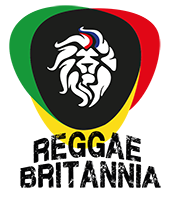





















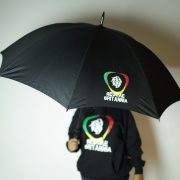
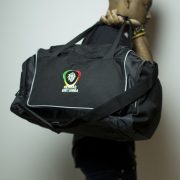
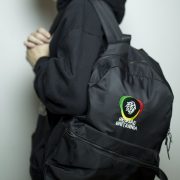
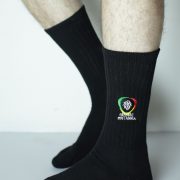
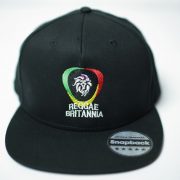
0 thoughts on “Eddy Grant”